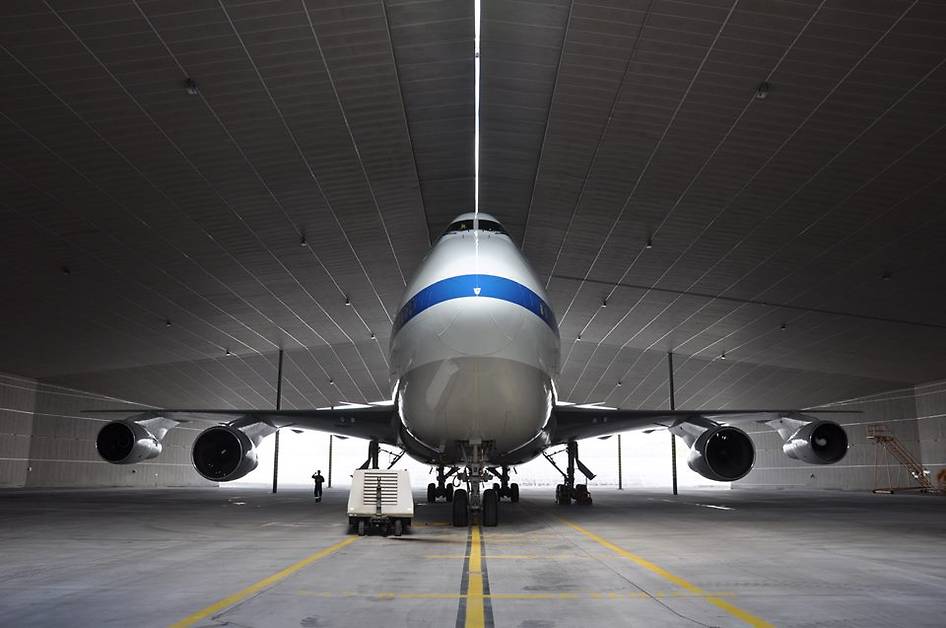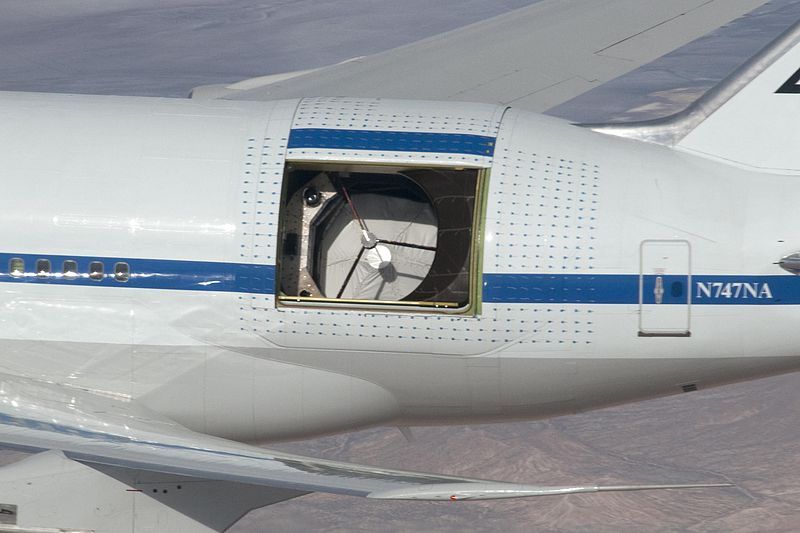NASA’s Stratospheric Observatory for Infrared Astronomy

NASA’s Stratospheric Observatory for Infrared Astronomy (SOFIA) enters the Lufthansa Technik hangar in Hamburg, Germany for its decadal inspection. Flight, aircraft maintenance, and science personnel from the Armstrong Flight Research Center worked alongside Lufthansa’s 747 specialists to perform a wide range of inspections and maintenance.
Water vapor in the Earth’s atmosphere absorbs infrared radiation, preventing a large section of the infrared spectrum from reaching ground-based observatories. SOFIA is a heavily modified Boeing 747 Special Performance jetliner that flies at altitudes between 39,000 to 45,000 feet (12 to 14 km), above more than 99 percent of Earth’s atmospheric water vapor giving astronomers the ability to study celestial objects at wavelengths that cannot be seen from ground-based observatories.
Wikipedia – SOFIA: The Telescope
SOFIA uses a 2.5-meter reflector telescope, which has an oversized, 2.7 meter diameter primary mirror, as is common with most large infrared telescopes. The optical system uses a Cassegrain reflector design with a parabolic primary mirror and a remotely configurable hyperbolic secondary. In order to fit the telescope into the fuselage, the primary is shaped to an f-number as low as 1.3, while the resulting optical layout has an f-number of 19.7. A flat, tertiary, dichroic mirror is used to deflect the infrared part of the beam to the Nasmyth focus where it can be analyzed. An optical mirror located behind the tertiary mirror is used for a camera guidance system.
Video: Touring around NASA’s flying telescope, SOFIA

Photo: SOFIA with open telescope doors A German-built telescope is exposed during a flight of NASA’s Stratospheric Observatory for Infrared Astronomy 747SP on Dec. 18, 2009. The telescope doors were fully opened, allowing engineers to understand how air flows in and around the telescope.
